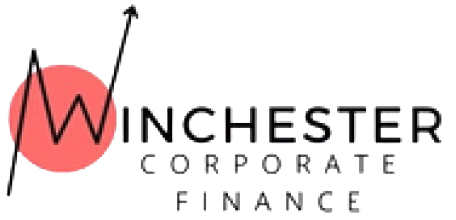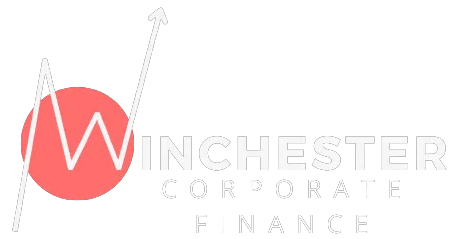Recovery Loan Scheme (RLS)
The Recovery Loan Scheme (RLS) is a government-back initiative designed to help UK businesses access financing. Its primary goal is to support companies that are looking to invest in their growth and development. Obtain the financial resources that your business requires to pursue new opportunities and improve your operations.
- Access to Finance: Designed to help UK businesses secure funding for growth and investment.
- Government Support: Backed by a government guarantee to boost lender confidence.
- Adaptable for Growth: Tailored to support businesses looking to recover, invest, and expand.

- Tailored Solutions for Your Unique Goals
- Dedicated Support from Start to Finish
- Transparent and Trustworthy Approach

What is a Recovery Loan Scheme?
The recovery loan scheme allows individual businesses to access loans of up to £10 million, with a group of businesses eligible for up to £30 million in total. The funds obtained through the RLS can be used for a variety of legitimate business purposes, such as managing cash flow, allowing growth and making crucial investments.
Under the RLS, lenders receive an 70% government-backed guarantee on any losses incurred from loans of up to £10 million. This guarantee enables lenders to provide loans that they might otherwise be hesitant to offer or would only do so at a higher interest rate without the assurance of government backing.
Key Features of the Recovery Loan Scheme for Your Business
The Recovery Loan Scheme is designed to embrace the borrowing options available to individuals and businesses. This initiative encourages lenders to provide commercial loans under better conditions, ensuring that borrowers have access to better financing terms when possible.
- Up to £2 million per business group: The maximum amount of any credit provided under the scheme is £2 million per business group for borrowers outside the scope of the Northern Ireland Protocol, and up to £1 million per business group for Northern Ireland Protocol borrowers. Minimum credit sizes vary, starting at £1,000 for asset and invoice finance, and £25,001 for term loans and overdrafts.
- Wide range of products: RLS supports term loans, overdrafts, asset finance and invoice finance facilities. Not all lenders will be able to offer all products.
- Term length: Term loans and asset finance facilities are available from three months up to six years, with overdrafts and invoice finance available from three months up to three years.
- Access to multiple schemes: Businesses that took out a CBILS, CLBILS, BBLS or RLS facility before 30 June 2022 are not prevented from accessing RLS after 1 August 2022, but in some instances borrowing under these schemes may reduce the maximum amount you are eligible for.
- Pricing: The annual effective rate of interest and upfront and other fees cannot be more than 16.9%.
- Personal Guarantees: Personal guarantees can be taken at the lender’s discretion, in line with their normal commercial lending practices. Principal Private Residences (your home) cannot be taken as security within the Scheme.
- Guarantee is to the lender: The scheme provides the lender with a 70% government-backed guarantee against the outstanding balance of the facility after it has completed its normal recovery process. The borrower always remains 100% liable for the debt.
- Decision-making delegated to the lender: Recovery Loan Scheme-backed facilities are provided at the discretion of the lender. Lenders are required to undertake their standard credit and fraud checks for all applicants.
"We have helped so many different types of businesses achieve their goals. It doesn't matter if you own a gym, restaurant, florist, hotel, or E-commerce website, you name it we've helped them find the capital they needed to expand. Few businesses aren't considered for this type of funding"

Callum Scott – Winchester Corporate Finance
Eligibility Criteria
Turnover Limit
This scheme is available to smaller businesses with a turnover of up to £45 million on a group basis.
UK-Based Requirement
Eligible borrowers must be actively trading in the UK and, for the majority of businesses, should be generating over 50% of their income from trading activities.
Viability Test
Lenders are required to assess whether the borrower possesses a viable business proposition. They may, at their discretion, overlook concerns regarding the borrower’s short-to-medium-term performance.
Business in difficulty
To qualify, borrowers must not be classified as a business in difficulty, which includes not being involved in any relevant insolvency proceedings.
Subsidy Limits
Borrowers must provide written assurance that receiving the RLS facility will not result in them exceeding the maximum allowable subsidy limits.
How do I access an GGS facility?
GGS (Growth guarantee scheme) is available through the British Business Bank’s accredited lenders list (to which Winchester Corporate Finance has access). The list is constantly being updated. Some lenders that offered facilities under the previous iterations of GGS between 6 April 2021 and 30 June 2021 may not be accredited to offer GGS facilities from August 2022.
Accredited lenders should only offer finance through GGS if they are unable to offer a facility on equivalent terms without a guarantee. Whether your business is eligible for GGS and whether it is suitable for you will be for the accredited lenders to decide. Such lenders range from high street and challenger banks to asset-based and specialist local lenders.
GGS supports a wide range of business finance facilities covering term loans, overdrafts, asset finance, and invoice finance.
Minimum facility sizes vary, starting at £1,000 for asset and invoice finance, and at £25,001 for term loans and overdrafts. The maximum facility value per business group is:
- £2 million for businesses across all sectors outside the scope of the Northern Ireland Protocol; or
- For businesses in scope of the Northern Ireland Protocol:
- £110,000 for businesses in the agriculture sector;
- £170,000 for businesses in the aquaculture and fisheries sector;
- £570,000 for businesses in the road haulage sector; and
- £1 million for businesses in all other sectors.
How long can I borrow for?
Term loans and asset finance facilities are available for up to six years, with overdrafts and invoice finance available for up to three years. A term extension beyond six years, up to a maximum of 10 years for existing GGS facilities can be made in connection with the provision of forbearance relating to the facility, at the discretion of the lender if within its usual forbearance policies.
What can I use it for?
An GGS facility can be used for any legitimate business purpose including, but not limited to, managing cashflow, or investment and growth purposes.

What fees and interest rates can I expect?
Interest rates and fees charged by lenders will vary and will depend on the specific lending proposal, but lenders are required to pass on the economic benefit of the guarantee to your business after accounting for its costs in using the scheme, for example, the scheme lender fee they are required to pay. Fees and interest are capped at 14.99%. Any upfront fee should not be greater than 5%.
Winchester Corporate Finance will be able to give you full details on what interest rates will be payable.
Will I be required to provide a personal guarantee?
Lenders are allowed to take personal guarantees for facilities of all sizes, if taking a personal guarantee is part of their typical lending practice. Lenders cannot take your principal private residence as security. A worked example to show what this means in practice:
- Business borrows £1 million facility with a £100,000 personal guarantee
- Business pays off £400,000 then defaults, owing £600,000
- Lender recovers £100,000 from other secured business assets such as a debenture (e.g., stock), leaving £500,000 outstanding
- Call on personal guarantee is £100,000 leaving £400,000 as an initial loss to the lender
- Lender can claim for 70% of this loss (£280,000) under the guarantee, leaving £120,000 as the final loss to the lender.
Refinancing with GGS
Your business can, in certain circumstances, use an GGS facility to refinance existing debt. For example, where your business is seeking to put itself on a more stable financial footing and/or improve its working capital position, then in principle an GGS facility could be provided where the business meets the GGS eligibility criteria.
Refinancing can be undertaken with or without an increase in the original borrowing.
Can GGS refinance an existing BBLS/ CBILS/ RLS facility, in part or in full?
Yes, where total financing needs (including any increase) are greater than the minimum facility sizes available under GGS.
Any re-financing will be considered as a new application for GGS, and will be subject to meeting the eligibility criteria. Re-financing can be sought with your existing lender or a different accredited lender.
Existing BBLS borrowers are able to refinance under GGS, however, borrower protections and scheme eligibility/terms under these schemes differ. Businesses should first discuss with their lender.
The total amount a business can borrow, including any additional lending sought as part of the re-financing of an existing facility will depend on a lender’s affordability assessment and GGS requirements.
Eligibility
Provided that they satisfy the other eligibility criteria, GGS is open to:
- sole traders
- corporations
- limited partnerships
- limited liability partnerships
- co-operatives and community benefit societies, and
- any other legal entity carrying out business activity in the UK.
Your business (together with your business group, if applicable) must generate more than 50% of its turnover from trading activity in the UK (i.e., the sale of goods or services).
Charities and further education establishments that do not generate more than 50% of their turnover from trading activity in the UK are currently eligible until 31 December 2022 so long as they can attest to having been affected by Covid-19.
Supporting Documents
In all cases, the lender will need to be provided with the amount of any previous subsidy received to obtain an GGS facility.
You may also need to provide certain other documents, which may vary from lender to lender but are likely to include:
- Management accounts
- A business plan
- Historic accounts
- Details of business assets
An GGS facility may still be an option to provide finance to support your business even if you do not have everything listed here. The decision will be up to the lender.
"Will details about my facility be made publicly available?"
Where required, information about facilities provided to businesses outside the scope of the Northern Ireland Protocol may be publicised on a new UK Government transparency database. Details of the UK reporting requirements will be required after the Subsidy Control Act 2022 comes into force and is expected to apply only where the amount of subsidy received exceeds £100,000.
Information on individual facilities for businesses in the scope of the Northern Ireland Protocol is not expected to be made publicly available.
Information that may be published is a subset of the information your business provides in your loan application, including:
- the identity of the borrower, for example, the name of your business or potentially your name if you are a sole trader or in a partnership
- type/size of business
- the region where the business is located
- the sector in which the business operates
- the date the aid was granted and the term of the facility, and
- the amount of aid granted.
The information reported is related to the business but may include personal data if you are a sole trader or in a partnership, or if your business name includes a reference to a natural person.
Further information on how BEIS and the British Business Bank process and share data can be found in the BEIS Privacy Notice and the British Business Bank Privacy Notice.
Northern Ireland Government Recovery Loan Scheme
Under the Northern Ireland Protocol, small business borrowers can access state-funded loans of up to £1 million. However, if your business operates in specific sectors where aid limits are reduced, such as agriculture, fisheries/ aquacultures and road freight haulage, the maximum borrowable amount with be subject to a lower cap.

As part of the application, you will need to complete three questions which will assess whether or not your business is potentially in the scope of the Northern Ireland protocol:
- Is your business (that is the legal entity proposing to borrow the GGS facility) established or registered in Northern Ireland?
- Does your business have any active subsidiaries, an active parent company, a business in the same corporate group and/or operations in Northern Ireland? Or does your business have plans to operate any such entities, or establish other operations in Northern Ireland within the next three years?
- Does your business provide a service or is it part of a supply chain that is specifically tailored to the needs of a customer or customers in Northern Ireland that manufacture or sell goods or participate in the Northern Ireland wholesale electricity market?
If the answer to any of the above questions is yes, you are likely within the scope of the Northern Ireland Protocol. If your business appears to be within the scope of the Northern Ireland Protocol and wants to borrow an amount that would take it above the maximum amount eligible, then you may have the opportunity to complete a more detailed questionnaire to determine if you are in scope.
Let’s talk about your business
Fill in the form or call us for a free consultation.
Why Choose Winchester Corporate Finance?
Winchester Corporate Finance guides the way to the right funding product for your business, including government recovery loan schemes, and then sources it at the best deal available.
Navigating funding options can be complex and overwhelming. Our goal is to simplify this process by providing you with clear guidance and support, helping to reduce your stress and concerns. We aim to demystify the various funding avenues available, ensuring you have the information and resources necessary to make informed decisions with confidence.
Growth: Our sourcing process provides you with a clear picture of what your lending options are
Family First: Peace of mind that we will look after you and your business by building a trusting relationship through sharing knowledge and full process transparency.
Integrity: We will continue to search for funding until we find the most suitable finance option for your business.
With Winchester, you can count on a seamless and stress-free experience from start to finish. So why wait? Apply Today!

Frequently Asked Questions
How long can I borrow for?
Term loans and asset finance facilities are offered for a duration of up to six years. Overdrafts and invoice finance options are available for a maximum of three years. In certain circumstances, existing GGS facilities may qualify for an extension beyond the six-year term, allowing for a maximum duration of up to 10 years. This extension can be granted at the lender’s discretion.
What can I use it for?
A GGS facility can serve various legitimate business purposes. These include but are not limited to, managing cash flow and supporting investment and growth initiatives.
What fees and interest rates can I expect?
Interest rates and fees charged by lenders will vary and will depend on the specific lending proposal, but lenders are required to pass on the economic benefit of the guarantee to your business after accounting for its costs in using the scheme, for example, the scheme lender fee they are required to pay. Fees and interest are capped at 16.9%. Any upfront fee should not be greater than 5%.
Winchester Corporate Finance will be able to give you full details on what interest rates will be payable.
Will I be required to provide a personal guarantee?
Lenders can require personal guarantees for loans of various sizes, provided that this practice aligns with their standard lending procedures. However, it’s important to note that lenders are not permitted to use your primary private residence as collateral for these loans. Consider the following worked example:
- Business borrows £1 million facility with a £100,000 personal guarantee
- Business pays off £400,000 then defaults, owing £600,000
- The lender recovers £100,000 from other secured business assets such as a debenture (e.g., stock), leaving £500,000 outstanding
- Call on personal guarantee is £100,000 leaving £400,000 as an initial loss to the lender
- A lender can claim 70% of this loss (£280,000) under the guarantee, leaving £120,000 as the final loss to the lender.
Can GGS refinance an existing BBLS/ CBILS/ RLS facility, in part or in full?
If total financing needs exceed the minimum facility sizes set for GGS, the refinancing process will be treated as a new application, subject to eligibility criteria. Borrowers have the option to refinance either with their current lender or with a different accredited lender. Existing BBLS borrowers may also refinance under GGS. It’s important to note that the terms and protections may differ. The amount available for borrowing will depend on the lender’s affordability assessment and the requirements specified by GGS.
Which Supporting Documents will I need to provide?
When applying for a GGS facility, it’s essential to inform the lender about any previous subsidies you have received. In addition to this information, you may be required to submit several other documents, which can vary by lender. Typically, these documents may include:
- Management accounts
- A business plan
- Historic accounts
- Details of business assets
It’s important to note that even if you don’t possess all of the listed documents, a GGS facility might still be a viable financing option for your business. Ultimately, the decision will rest on the lender.


